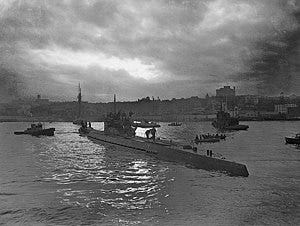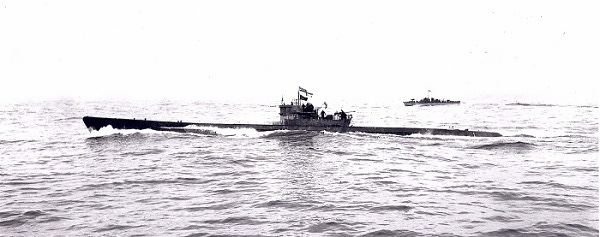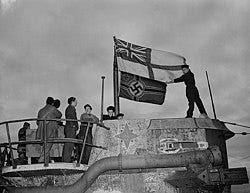U-190: German U-boat, surrendered in Bay Bulls, NL
From Deadly Waters to Surrender: The Story of U-190 and its Crew
The German submarine U-190, a Type IXC/40 U-boat, was a key player for Nazi Germany's navy during World War II. It was constructed by DeSchiMAG AG Weser in Bremen, with its keel laid down on October 7, 1941. Launched on June 8, 1942, and commissioned on September 24, 1942, under the command of Kapitänleutnant Max Wintermeyer.
Throughout its service, U-190 completed six war patrols, during which it successfully sank two ships. In July 1944, Wintermeyer was replaced by Oberleutnant zur See Hans-Erwin Reith, who continued to lead the submarine for the remainder of its time in the Kriegsmarine.
U-190 conducted six war patrols, sinking two ships with a total of 7,015 GRT and 590 tons. The first was the 7,015 GRT British cargo ship Empire Lakeland, sunk off Rockall on 8 March 1943, one week into U-190's first operation. The next four patrols were unsuccessful.
After the sinking of Empire Lakeland, U-190 evaded pursuit and continued patrolling off the North American east coast until receiving Reichspräsident Karl Dönitz's order to surrender on May 8. The boat encountered the Canadian frigate HMCS Victoriaville 500 nautical miles (930 km; 580 mi) off Cape Race, Newfoundland, on May 11. Under the command of Oberleutnant zur See Hans-Erwin Reith, the crew of U-190 surrendered unconditionally and were taken prisoner aboard Victoriaville, which escorted the submarine to Newfoundland.
Keep reading with a 7-day free trial
Subscribe to The Newfoundland History Sleuth to keep reading this post and get 7 days of free access to the full post archives.






